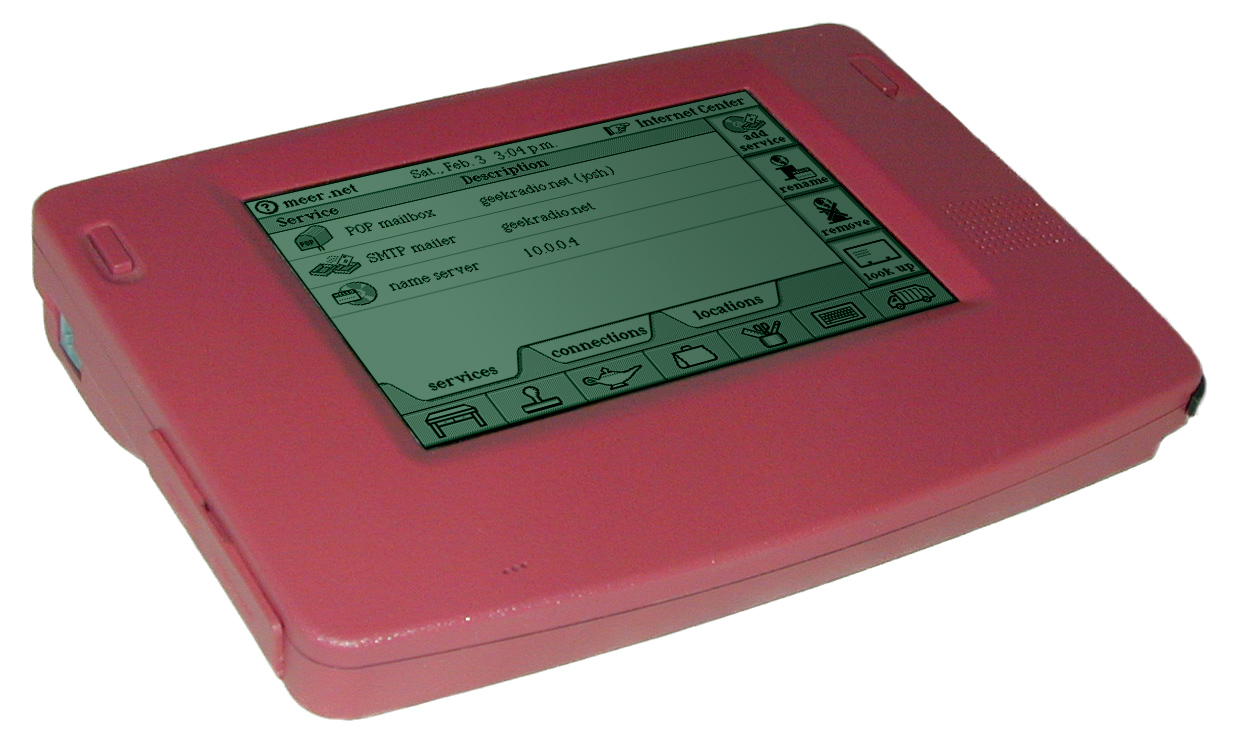
As I was digging through some backup CDs I stumbled onto this little
gem from my General Magic days. MagicHTTP was a web server I built in
early 1996 that ran on Magic Cap personal communicators. Not a web
browser, but a web server. You could easily create pages on
your communicator that others could view with any web browser.
Additionally, the server would translate Magic Cap text styles into
HTML tags.
Thanks to Alasdair Dunlap-Smith for writing this FAQ entry.
Many people (myself included) have reported problems installing
packages on the Datarover 840F. It seems lately many people have
gotten Datarover 840F’s cheap and brand-new on eBay – problem is,
they all seem to have pre-release ROMs, which are incompatible with
connectivity software such as WinPCLink and Josh Carter’s package
mailer. As Josh has said, the only hardware different between the
Datarover 840 and 840F is the 840F’s use of flash ROMs, which can be
upgraded. The solution to this would be to try and re-flash the
Datarover’s ROM with a newer release version. The problem is “How?”
Well, that’s what I’m going to try to lay out in detail.










